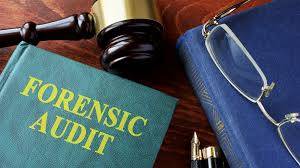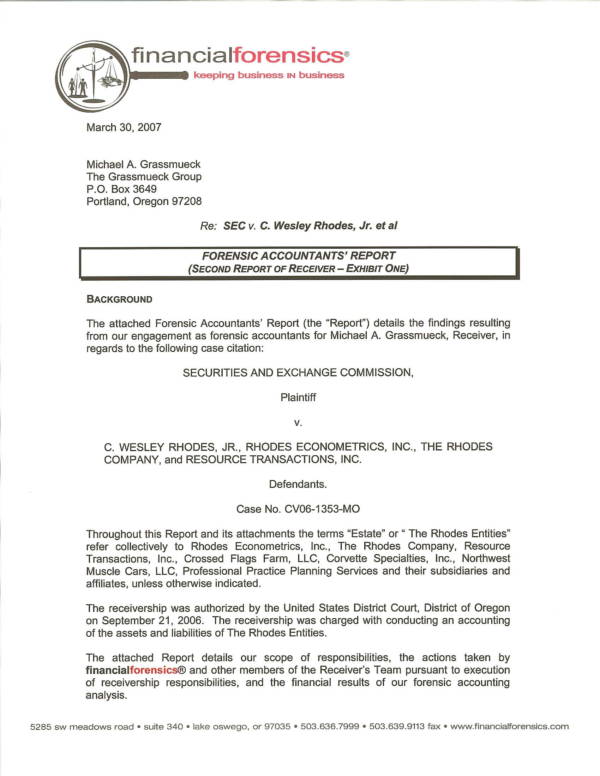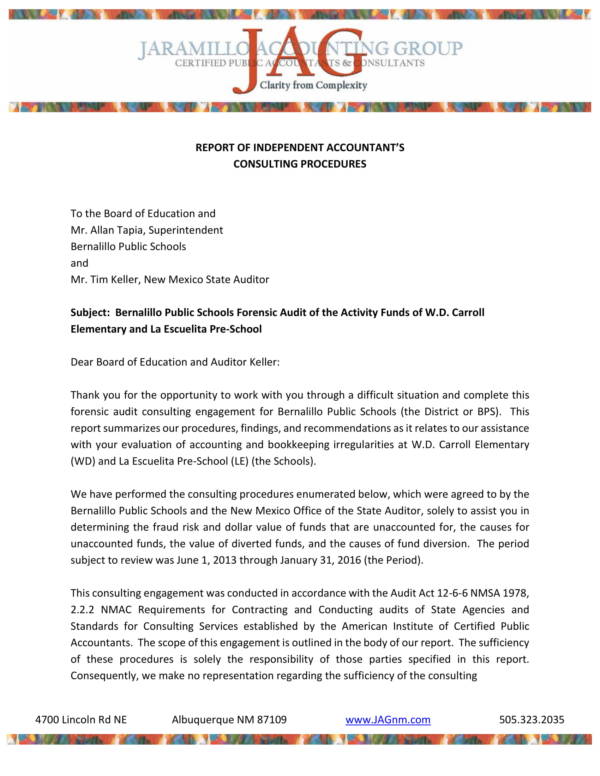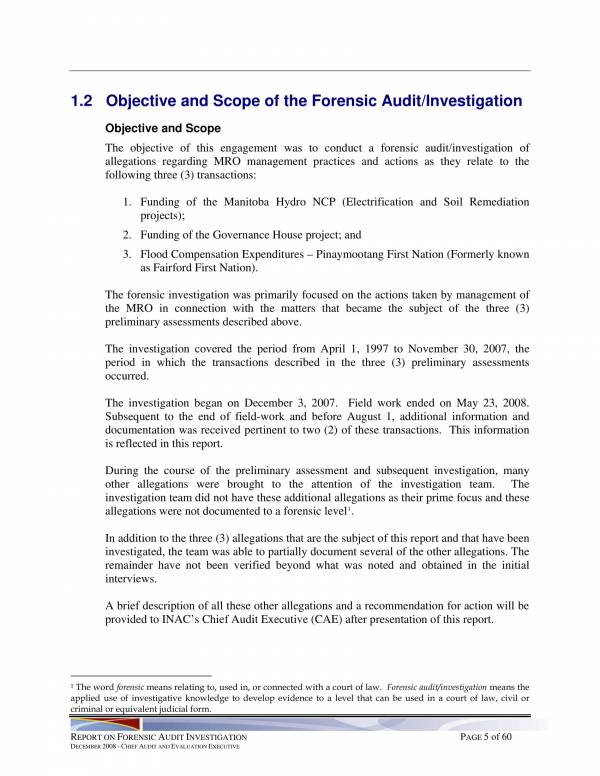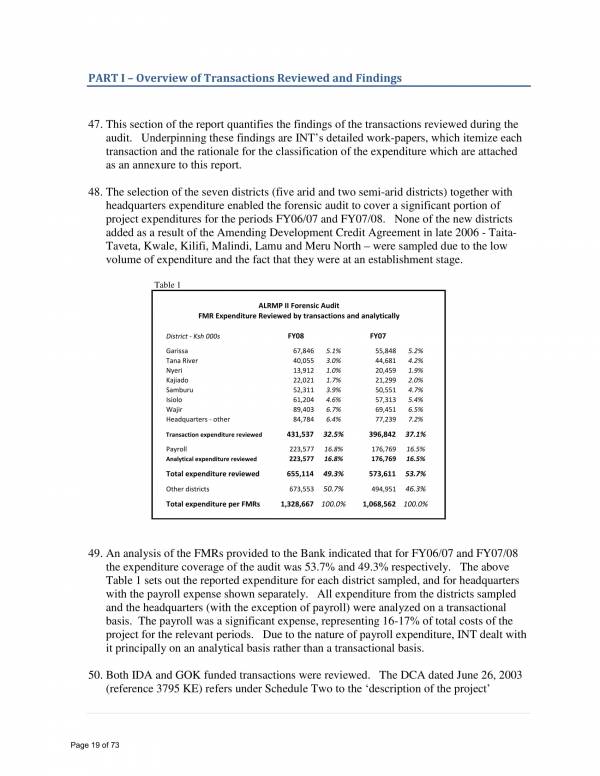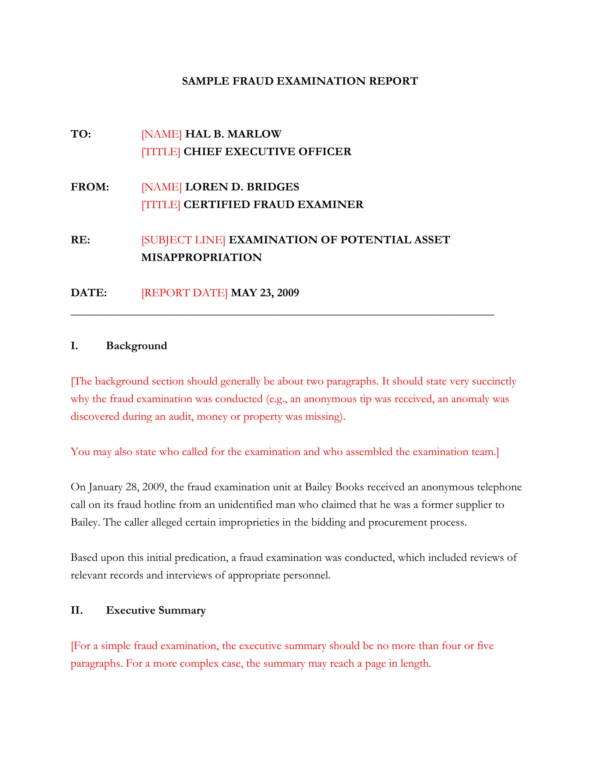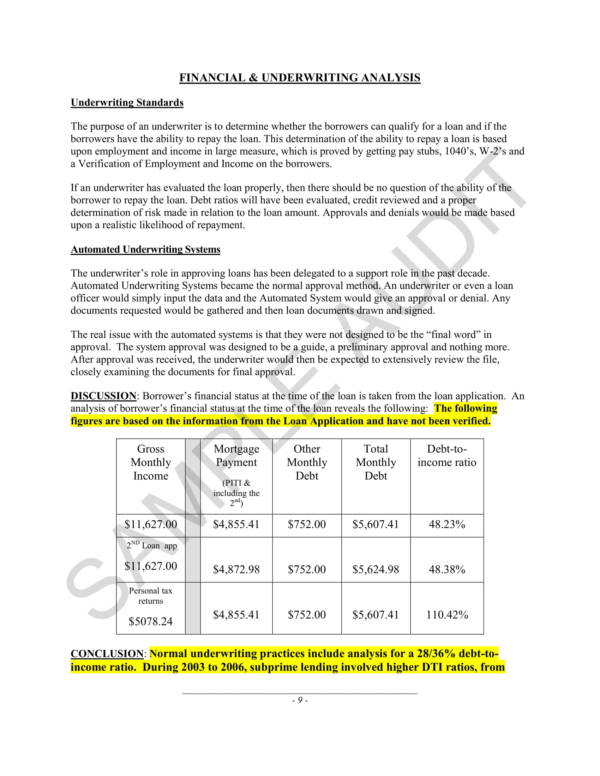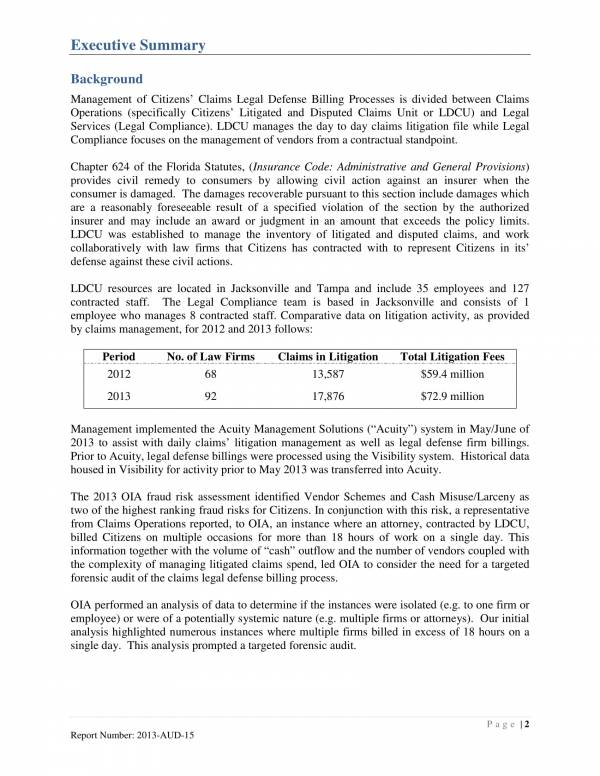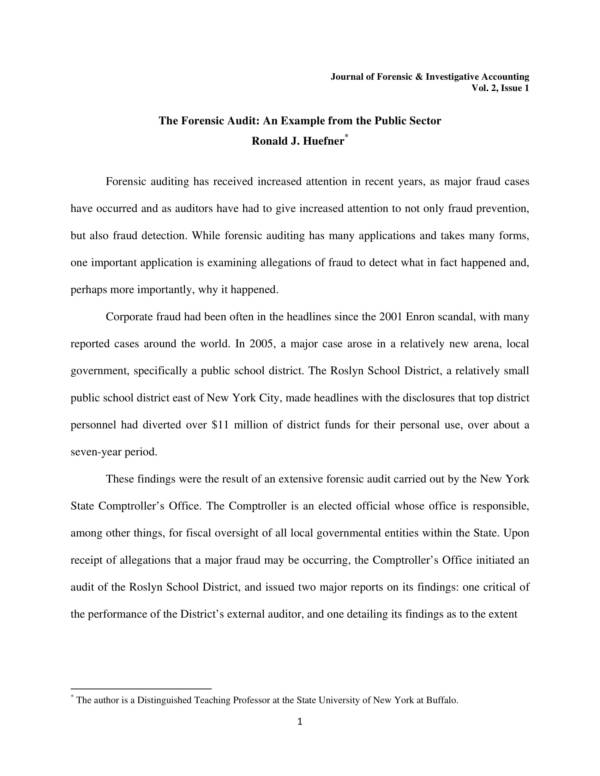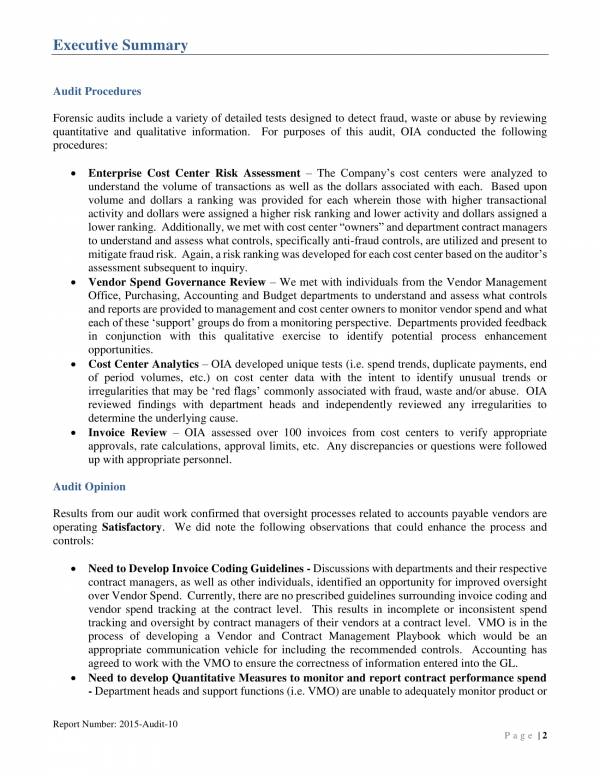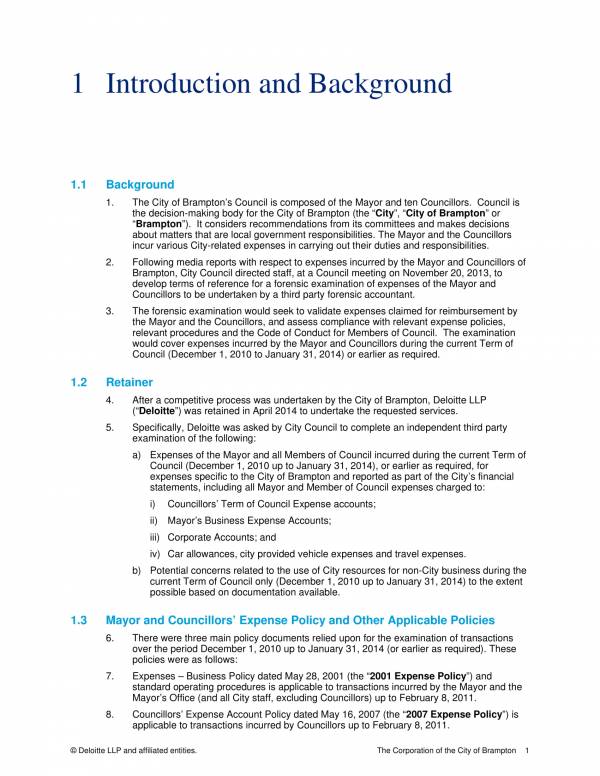Do you you know what an audit report is? An audit report is a document where information such as findings of an audit assessment or audit investigation is recorded. It also includes the outcome or the result of the audit that was conducted and an explanation on why that result is given. Simply put, an audit report is a report that is created as a documentation of the audit that has been conducted.
There are many different types of audits and audit reports that are used for many different purposes. Each of them are equally important in the areas or industries where they are used. In this article, we will be learning about one type of audit report which is a forensic audit report. We have included audit report samples and templates about forensic audit that you may find useful. Check them out below.
Forensic Audit Report Template
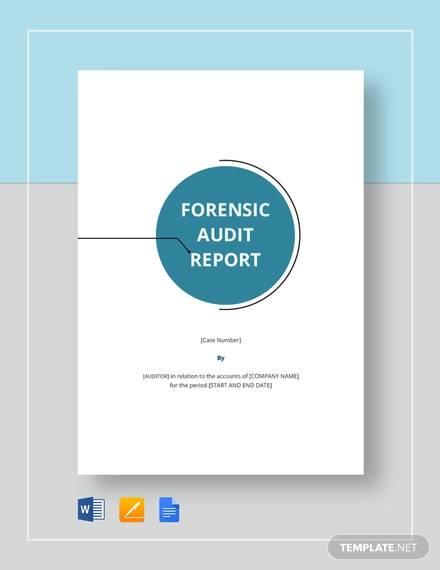
Forensic Accountant’s Audit Report
Independent Accounts Forensic Audit Report Sample
Report on Forensic Audit Investigation
Arid Lands Forensic Audit Report Sample
Sample Internal Fraud Audit Report Template for Businesses
Loan Forensic Audit Report Sample
Forensic Audit Report of Select Payroll and Overtime Practices
What Is a Forensic Audit?
What is the first thing that comes to mind when you hear the word forensic audit? You would probably focus more on the word forensic because we see it as something interesting and crime related. This is true among those who don’t really know what a forensic audit is. But a forensic audit should not be mistaken to forensics in crimes and murder. While it may have some relation to crime, it is actually not what you think it is.
A forensic audit is defined as an examination or inspection of a company’s or organization’s financial records in order to gather information that can be used in a court of law or in legal proceedings. Forensic auditing is a specialization in the field of accounting so these auditors or investigators are not really those who go to crime scenes that you see in the movies. Forensic accountants or auditors cover a wide range of investigative activities disputes related to bankruptcy and divorce. Large companies mostly have their own forensic auditing department.
Forensic auditing is conducted to reveal cases of fraud, embezzlement and other financial claims to prosecute the individuals or parties who are involved in such acts. Aside from examining financial records of companies, forensic auditing is also used in divorce to determine any negligence from both sides and to determine the amount of spousal support one has to pay. Forensic auditors also appear in court to testify during trial proceedings.
There are other audit relates articles with samples and templates that you might want to check out, like Daily Audit Report Samples & Templates, Compliance Audit Report Samples and Templates, and HR Audit Report Templates.
Why Is a Forensic Audit Conducted?
There are a number of important reasons why a forensic audit is conducted and they are as follows:
Corruption
One of the main reasons for conducting a forensic audit is corruption. Corruption is an dishonest act or fraudulent act that is done by people in power. It is just natural that people who are in power have access to almost all of the resources and money of a company or organization as their jobs require them to do so. While there are a lot of honest people out there, there are still more who aren’t, and corruption is not limited people in power but to all those who have access to important things. To ensure that people in power are not using these resources for their personal gains, a forensic audit is conducted. Forensic auditors would look for conflicts of interest, bribery and extortion while conducting their fraud investigation.
Misappropriation of Assets
Asset misappropriation is very common and prevalent form of fraud in most companies or organizations. It takes place when a person or individual who is given access and entrusted with the company’s assets steal from it. It is also known as insider fraud. Asset misappropriation involves cash misappropriation, payments made to people or suppliers who are non-existent, misuse of assets, stealing from inventory, creating fake invoices and many more.
Financial Statement Fraud
In a financial statement fraud, the financial statements of the company are deliberately misrepresented, omitted and changed in order to show that the company’s current financial performance is better than what is really is. The goals is to deceive financial statement users and make them believe that top management is doing a good job in managing the company, and to make sure that they continue receiving bonuses. Financial statement fraud, includes omitting transactions and certain amounts, accounting records being forged, not disclosing the relevant details in he financial statement, etc.
The success of a forensic audit can also be said as the success of a company as corruption, misappropriation of assets and financial statement frauds make up a set of activities that helps bring down a company to its closure. Want to learn more about audits and audit reports? If so, then we have related titles, like Environmental Audit Report Samples & Templates, Safety Audit Report Templates, and External Audit Report Samples & Template that you can check out on our website.
Legal Defense Billing Forensic Audit Report
Forensic Audit Report Sample
Accounts Payable Forensic Audit Report Sample
Forensic Audit Report of Government Officials’ Expenses
How Is Forensic Auditing Investigation Conducted?
Just like all other types of audits, there are certain steps or procedures that forensic auditors follow in conducting a forensic audit. They undergo special training to be able to properly and professionally conduct one. The steps below will help you further understand what goes on in a forensic audit.
Step #1: Accept the investigation.
Companies hire or invite external auditors or dependent auditors to conduct a through audit of their company. Before the auditors completely accept the invitation, they first asses themselves they have the right tool and the appropriate knowledge to be able to do the job they are invited to do. If they feel that they are capable of doing it, only then shall the invitation for the audit investigation be accepted.
Step #2: Determine the categories of the investigation.
Before starting to plan for the investigation, forensic investigators first need to determine the categories of the investigation. The categories of the investigation that the forensic auditor needs to focus on and should always be clear about are as follows:
- The type of fraud or fraudulent activity that is being done
- How long has this fraudulent activity been going on
- How such fraudulent activity has been kept secret or concealed
- Who are involved in the said activities
- Determining the client’s financial loss due to fraud
- The evidences that will be gathered to be presented in the court proceedings
- Giving advice or recommendations to prevent recurrence of any forms of fraud.
Step #3: Plan the investigation.
After accepting the job, auditors or audit investigators then plan for the things and activities to be done before, during and after the investigation. In this part of the investigation process the goals and objectives of the audit investigation is set and the scope of the investigation is also determined. The methodology used is also selected and it should be one that is appropriate and beneficial to the audit investigation.
Step #4: Gather the evidence.
Once the plan for the investigation has been laid out and finalized, the next step in the process is the gathering of evidence and other essential information that will best help the case. These evidences will be used in court proceedings to prosecute those who are involved in fraud and to prove that they are doing such acts. The techniques used by the forensic investigators, include using of analytical processes, application of audit techniques that are computer-assisted, testing controls to gather evidence, cash counts, having discussions and interviews with the employees, and documentation review.
Step #5: Report of the findings.
The next step to the investigation process is writing an audit report. Auditors are expected to summit or present a full report on their findings, as well as all those essential evidences that they were able to gather during the audit investigation. Audit reports are common when it comes to audits. Other things that are included in an audit report is the the summary and conclusion of the investigation, the methods used and other activities that were done during the audit.
Step #6: Court proceedings.
In this step, the forensic auditors are called to testify in court and are tasked to explain and simplify the evidences found so that everyone will be able to understand them. This only happens if the audit conducted will end up or lead to an audit proceeding and the auditor will give support to the litigation.
Those are steps followed in conducting a forensic audit investigation and following each step will guarantee and organized and fruitful investigation. Other related articles that you may also find useful are Stock Audit Report Samples & Templates, Tax Audit Report Samples & Templates and Information Technology Audit Report Samples & Templates.
Related Posts
10 + Internal Audit Report Templates Samples
13+ Audit Report Samples Sample Templates
11+ External Audit Report Samples
10+ Tax Audit Report Samples
9+ Stock Audit Report Samples & Templates
17+ Sample HR Reports Sample Templates
8+ Sample Risk Assessment Reports Sample Templates
40+ Report Format Sample Templates
18+ Sample Inventory Reports
45+ Sample Reports Sample Templates
9+ Committee Report Templates Sample Templates
7+ Sample Financial Reports Sample Templates
8+ Sample Audit Plan Templates
7 Audit Program Samples & Templates
11+ Sample Company Reports Sample Templates
